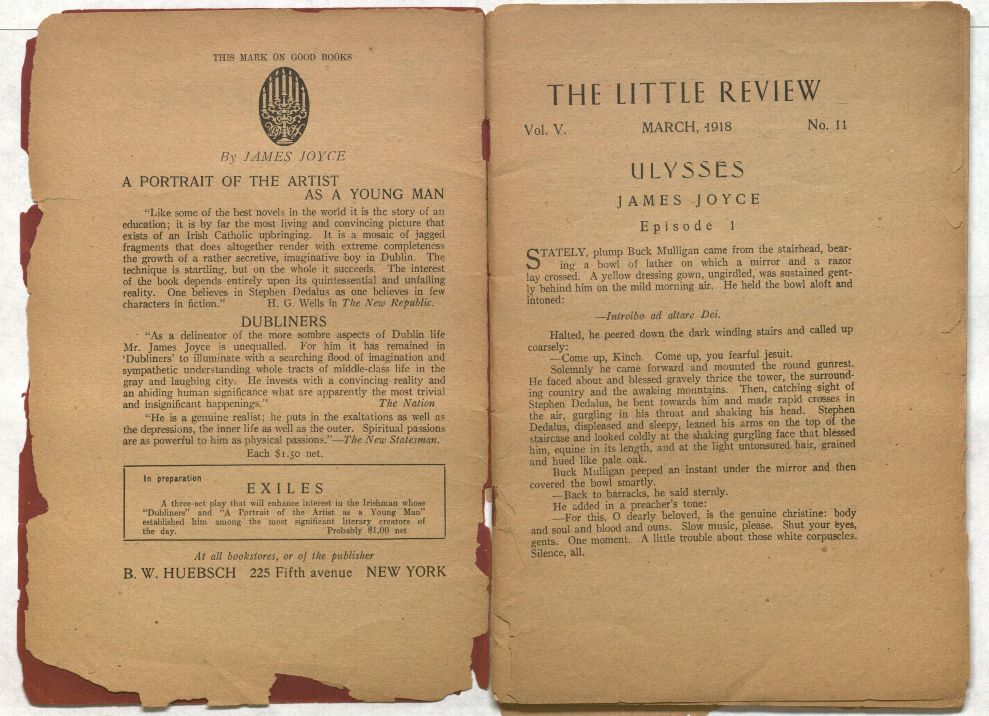In 1918, The Little Review, an American literary magazine founded by Margaret Anderson and aided by the likes of publisher Jane Heap and the writer and critic Ezra Pound, serialised the seminal work of James Joyce, Ulysses. For any of you who have read Ulysses, I applaud you - it's a real beast and I put my hands up and admit that I have never got past the first 10 pages. It took Joyce seven years to finish writing and its serialisation was published for over two years but it was ultimately lauded as one of the most important and influential books of Modernist literature.
As with any form of art that is less than accessible, however, be it a piece of writing, painting, film, photograph etc, it wasn't loved by everyone...Joyce's Nausica episode, which gradually becomes more obviously a scene of voyeurism and sexual fantasy, subsequently led to a prosecution for 'obscenity'. In 1920, following The Little Review's recent publication of a scene in the book in which the main character masturbates, a trial began that would lead to the effective banning of the novel in the USA. The book was also banned in the UK until the 1930s.
United States v. One Book Called Ulysses was the name of the case that began in 1933 that would determine finally whether or not Joyce's novel should be banned.
It took until 7th August (and now you get the relevance of the post...) 1934 for US District Judge John Munro Woolsey's ruling that the book was not pornographic nor obscene to be affirmed by the Second Circuit Court of Appeals. The USA subsequently became the first English-speaking nation to publish the book freely after decades of American tourists smuggling in copies of the novel from Paris, where it was first published in its entirety in 1922 by Sylvia Beach at Shakespeare and Company.


No comments:
Post a Comment